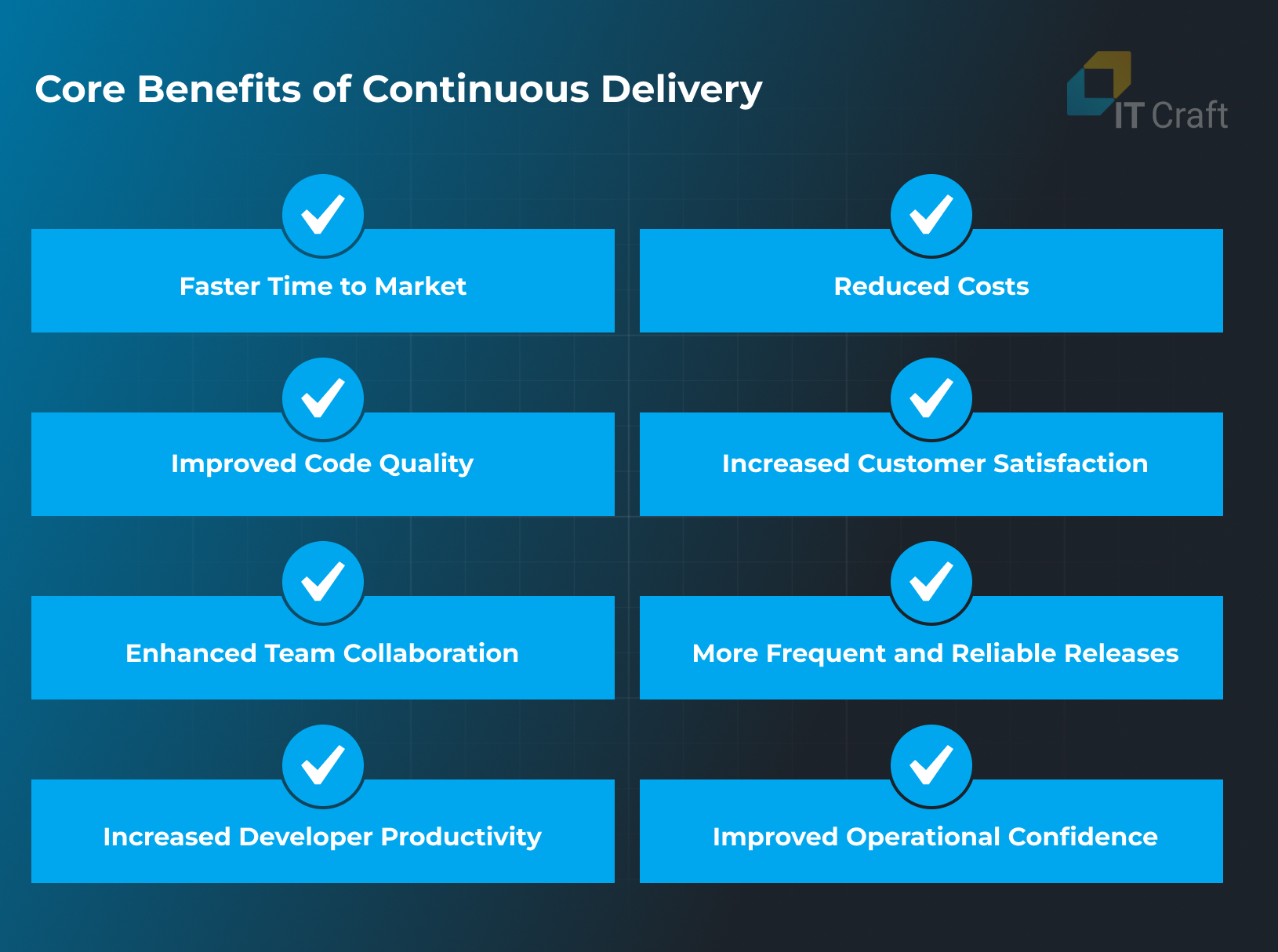Using Continuous Delivery in DevOps can give you a serious competitive edge. Your project team can launch market-ready features in less time by automating code releases. The use of CI/CD best practices enables high software quality for the same or lower budget and a quick adaption to customer expectations.
Core Benefits of Continuous Delivery in DevOps:
Faster Time to Market
Updates and new releases go to production faster with automation of code commits packaging, build testing, and deployments.
As a result, businesses implementing continuous delivery in DevOps can become market leaders by efficiently adapting to market challenges and evolving user expectations, for which it will quickly offer new updates and features.
Reduced Costs
Automation means less manual work. It improves resource allocation and greatly decreases the chance of errors.
Accelerated releases and fewer errors translate into lower operational expenses and enhanced performance.
Improved Code Quality
By emphasizing extensive test automation (unit, regression, integration, interface, etc.), Continuous Delivery in DevOps allows the project team to rigorously examine changes before they are deployed to production without inflating project scope.
The project team can detect and eliminate flaws in code in a timely manner. They can maintain a high quality codebase and prevent issues from emerging in the production stage. Practices like DevOps containerization further ensure consistent and reliable deployments.
Increased Customer Satisfaction
The project team can open access to product updates and new features faster while delivering them in multiple quick releases.
Also, Continuous Feedback enables the project team to identify areas for improvement and iteratively refine the product, meeting user expectations for software quality.
Enhanced Team Collaboration
The CI/CD emphasizes efficient communication, harmonized workflows, and improved coordination. It helps form a cohesive unit from disjointed development and operations departments.
As a result, CI/CD implementation simplifies releases and encourages shared responsibility for the deployment outcomes, forming a continuous improvement cycle often referred to as the DevOps loop.
More Frequent and Reliable Releases
Instead of working on large releases, project teams launch small yet regular updates. This approach minimizes typical risks in a release, such as merge conflicts. It also streamlines finding and eliminating problems with quality if those emerge.
The project team sticking to best CI/CD practices is less likely to miss deadlines while automation helps them attain high stability and consistency.
Increased Developer Productivity
Continuous Delivery in DevOps and the automation it introduces leave developers more time to complete strategic and creative tasks, shifting routine operations to machine.
Developers work more productively thanks to an optimized workflow and constant feedback. They require less time on coordination.
Improved Operational Confidence
A well-established CI/CD pipeline helps the project team gain confidence in the quality and reliability of new product releases who know that all new code goes through a robust testing and deployment automation flow.
The project team can increase release frequency knowing that the risks of low-quality source code are mitigated through necessary checks.

Conclusion
Continuous Delivery enhances software development and operations processes. It increases the pace and efficiency of delivery as well as the project team’s responsiveness to business and end-user needs.
Our DevOps development services include Continuous Delivery, which we use to integrate the entire project team and ensure cost-efficient budget allocation.


